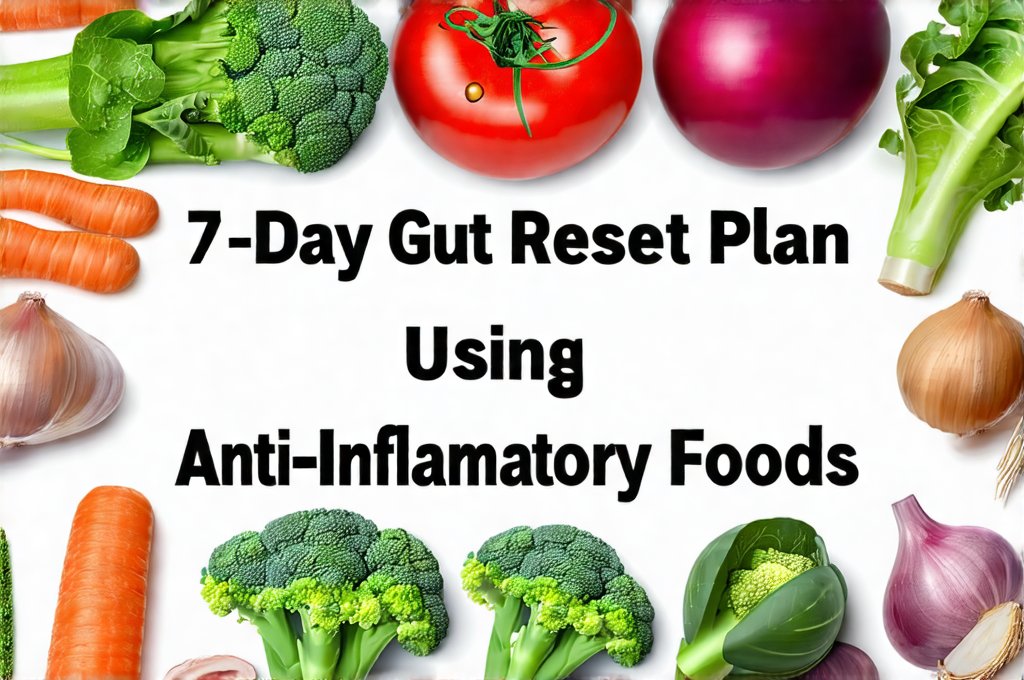The gut microbiome – trillions of bacteria, fungi, viruses, and other microorganisms residing in our digestive tract – plays an incredibly important role in overall health. It’s not just about digestion anymore; a healthy gut influences immune function, mental wellbeing, hormone regulation, even skin health. Modern lifestyles—characterized by processed foods, chronic stress, overuse of antibiotics, and lack of physical activity—often disrupt this delicate ecosystem, leading to inflammation, digestive issues, and an increased risk of chronic diseases. Many people unknowingly live with compromised gut health, experiencing symptoms like bloating, fatigue, brain fog, or autoimmune flare-ups without realizing the root cause.
A “gut reset” isn’t about drastic dieting; it’s a strategic approach focused on nourishing beneficial bacteria, reducing inflammation, and restoring balance to the digestive system. This is best achieved through dietary adjustments centered around anti-inflammatory foods that support gut health and minimize irritants. A seven-day plan allows for a manageable timeframe to implement changes and observe how your body responds. It’s about building sustainable habits, not restrictive rules, and focusing on what you can add to your diet rather than solely on what you need to eliminate. This approach prioritizes whole, unprocessed foods that provide essential nutrients for optimal gut function and overall wellbeing.
Understanding the Gut-Inflammation Connection
Chronic inflammation is at the heart of many health problems, and the gut plays a central role. When the gut microbiome is imbalanced (dysbiosis), it can lead to increased intestinal permeability, often called “leaky gut.” This means the tight junctions between cells in the intestinal lining become compromised, allowing undigested food particles, toxins, and bacteria to enter the bloodstream. The immune system recognizes these foreign invaders and mounts an inflammatory response, which, if prolonged, contributes to systemic inflammation throughout the body.
Inflammation is a natural process, but when it becomes chronic, it can damage tissues and contribute to conditions like autoimmune diseases, heart disease, diabetes, and even mental health disorders. Anti-inflammatory foods help calm this immune response and support gut healing. Foods rich in polyphenols (found in berries, green tea, dark chocolate), omega-3 fatty acids (salmon, flaxseeds, chia seeds), and fiber (fruits, vegetables, whole grains) are particularly beneficial. Conversely, processed foods, sugar, refined carbohydrates, and unhealthy fats can exacerbate inflammation and further disrupt the gut microbiome.
A key component of a successful gut reset is identifying and minimizing food sensitivities. While not necessarily full-blown allergies, sensitivities can trigger inflammation and digestive discomfort. Common culprits include gluten, dairy, soy, corn, and nightshades (tomatoes, peppers, eggplant). Eliminating these foods for seven days, then reintroducing them one at a time while monitoring symptoms, can help pinpoint potential triggers. Understanding dairy sensitivities is often the first step for many.
The 7-Day Anti-Inflammatory Gut Reset Plan
This plan focuses on incorporating gut-healing foods and eliminating common irritants. It’s designed to be flexible and adaptable to individual needs and preferences. Remember that consistency is key for optimal results. Hydration is also crucial, so aim for at least eight glasses of water daily. Here’s a general outline:
Days 1-3: Eliminate & Restore: Focus on removing inflammatory foods (sugar, processed foods, gluten, dairy if sensitive) and incorporating gut-soothing options like bone broth, fermented foods, and herbal teas. Increase fiber intake gradually to avoid bloating.
Days 4-7: Rebuild & Nourish: Continue eliminating irritants while adding more diverse anti-inflammatory foods. Introduce prebiotics (foods that feed beneficial bacteria, such as garlic, onions, bananas) and probiotics (live bacteria found in yogurt, kefir, sauerkraut). Listen to your body and adjust the plan based on how you feel.
Sample Daily Meal Plan:
* Breakfast: Oatmeal with berries and a sprinkle of chia seeds.
* Lunch: Large salad with grilled salmon or chicken, avocado, and olive oil vinaigrette.
* Dinner: Baked sweet potato with steamed vegetables and a side of fermented kimchi.
* Snacks: A handful of almonds, a small apple with almond butter, or a cup of herbal tea.
Incorporating Probiotics & Prebiotics
Probiotics are live microorganisms that provide health benefits when consumed. They help restore balance to the gut microbiome by increasing the population of beneficial bacteria. Excellent sources include:
* Yogurt (choose unsweetened varieties with live and active cultures)
* Kefir
* Sauerkraut, kimchi, kombucha (fermented vegetables/tea – check sugar content)
* Miso
Prebiotics, on the other hand, are non-digestible fibers that serve as food for probiotics. They help nourish beneficial bacteria, allowing them to thrive and multiply. Good sources include:
* Garlic, onions, leeks
* Bananas (slightly green ones have more resistant starch)
* Asparagus
* Oats
Combining probiotic-rich foods with prebiotic-rich foods creates a synergistic effect known as synbiotics, which can further enhance gut health. It’s important to introduce these gradually, as a sudden increase in fiber or probiotics can sometimes cause temporary digestive discomfort. A focus on functional foods can greatly aid this process.
Hydration & Digestive Support
Adequate hydration is essential for optimal digestion and nutrient absorption. Water helps move food through the digestive tract and prevents constipation. Aim for at least eight glasses of water daily, but adjust based on your activity level and climate. Herbal teas like ginger, peppermint, or chamomile can also contribute to hydration and provide additional digestive support. Ginger is known for its anti-inflammatory properties and can help soothe nausea and bloating, while peppermint can relax the digestive muscles and relieve gas. Chamomile has calming effects that may reduce stress, which can indirectly benefit gut health.
Beyond water and herbal teas, consider incorporating other digestive aids:
* Bone broth: Rich in collagen and amino acids that support gut lining repair.
* Apple cider vinegar (ACV): Diluted ACV can help improve digestion and balance stomach acid levels (use with caution, as it’s acidic).
* Fiber-rich foods: Gradually increase fiber intake to promote regularity and nourish beneficial bacteria.
Stress Management & Mindful Eating
Stress has a significant impact on gut health. When we’re stressed, our bodies release cortisol, the stress hormone, which can disrupt digestion, alter gut motility, and weaken the immune system. Chronic stress can lead to dysbiosis and increased intestinal permeability. Implementing stress management techniques is therefore crucial for a successful gut reset:
* Meditation or mindfulness: Helps calm the nervous system and reduce cortisol levels.
* Yoga or deep breathing exercises: Promotes relaxation and reduces tension.
* Spending time in nature: Has restorative effects on both physical and mental health.
Mindful eating – paying attention to your food, savoring each bite, and eating without distractions – can also improve digestion and reduce stress. Chewing food thoroughly is especially important, as it breaks down food particles and makes them easier to digest. Avoid eating while distracted (e.g., watching TV or scrolling through social media) and take the time to appreciate your meals. For those recovering from vomiting, mindful eating is particularly beneficial. Understanding how to starve bad bacteria can also set you on the right path. You may even consider testing your gut microbiota for personalized plans. Finally, remember that inflammation plays a key role in gut health.


















